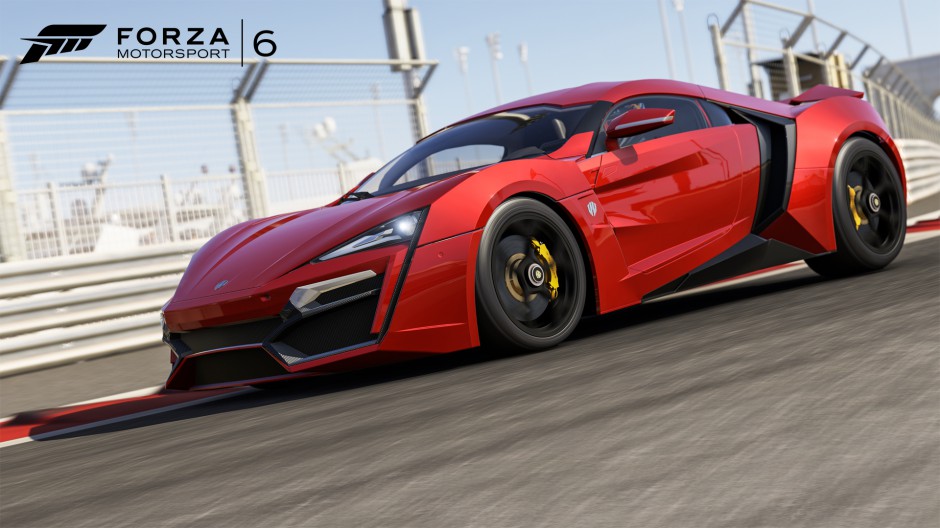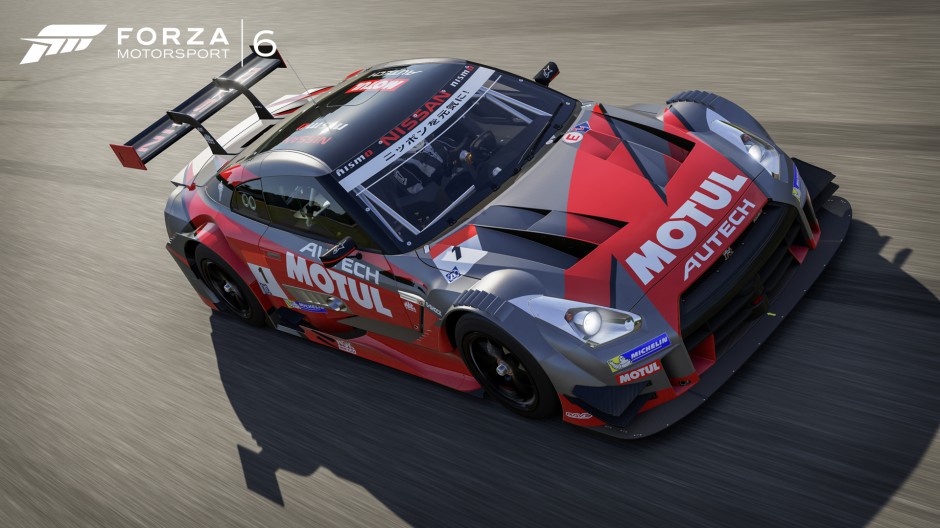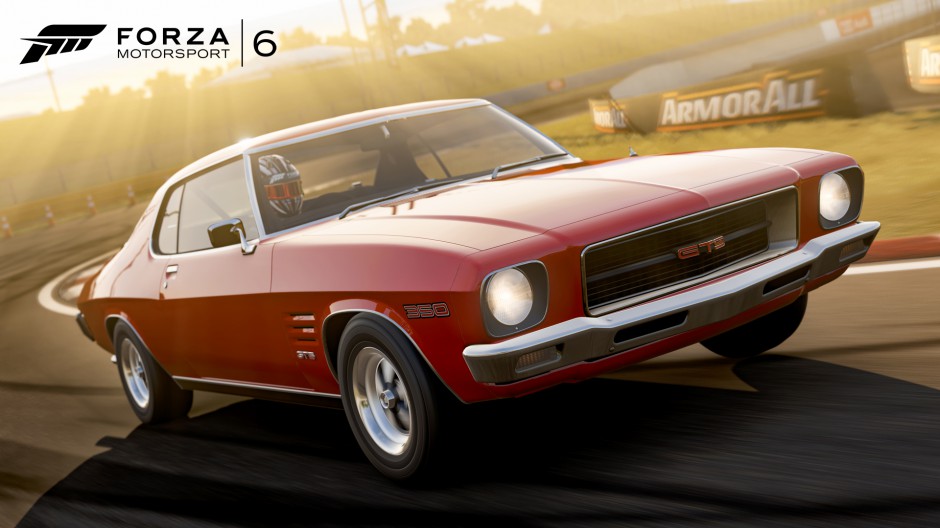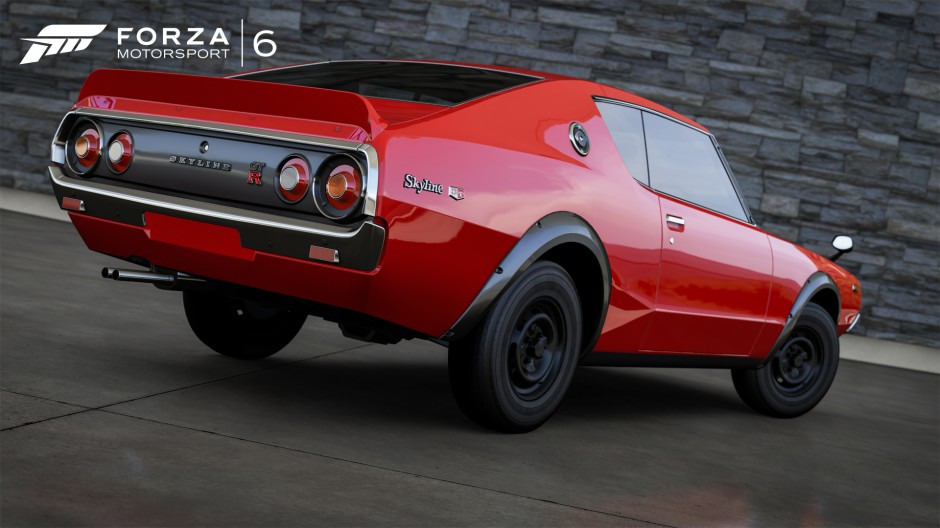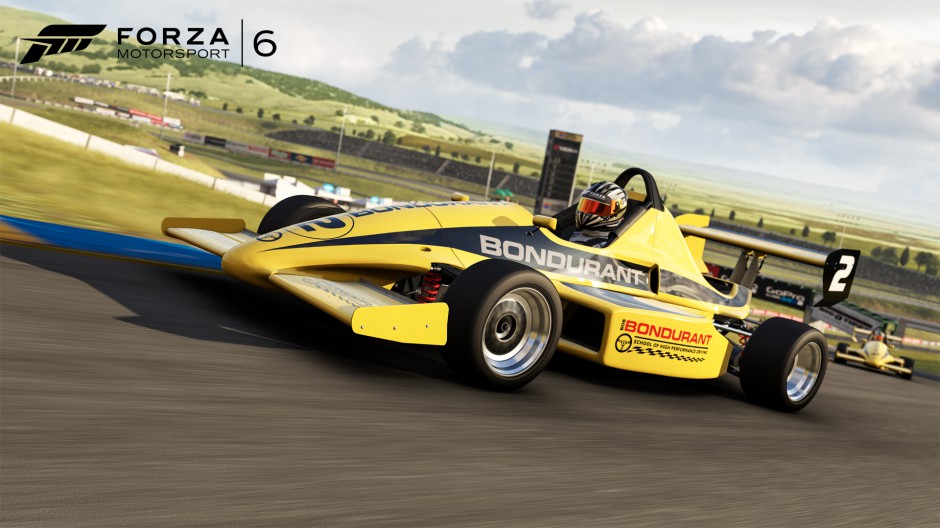Dress Up Your Forza Motorsport 6 Garage with the Ralph Lauren Polo Red Car Pack
Forza Motorsport 6 fans looking to grow their garage now have seven more cars to choose from thanks to the Ralph Lauren Polo Red Car Pack. This pack presents new and vintage cars that broaden the Career experience and offer more weapons to take to battle on the track.
The W Motors Lykan HyperSport’s outrageous lines and beastly performance turned heads in movie theaters this past spring in Furious 7 and it heads off this cadre of new vehicles to collect, customize and race. The remaining cars of the pack were handpicked from three different racing disciplines, alongside a trio of vintage classics from three different continents.
The Ralph Lauren Polo Red Car Pack is included at no additional cost to owners of the Forza Motorsport 6 Car Pass, which brings six car packs featuring seven cars each month. That’s 42 cars in total, all ready to be instantly added to your garage to customize, tune and race! All other players can purchase the pack separately for $6.99 or buy cars from the pack individually.
2016 W Motors Lykan HyperSport
Before you try and find a skyscraper to launch “Arabia’s first supercar” from, just like Vin Diesel and Paul Walker in the film Furious 7, consider its $3.4-million price tag and amazing performance. After all, even a car of this value cannot be expected to survive such a thrashing. However, take it to the graywacke aggregate surface of Yas Marina, and you will be astounded by its ability to destroy the competition. This bespoke carbon-fiber monocoque with a 770-horsepower Ruf twin-turbo 3.8-liter flat six pushing it around is formidable, to say the least. If dressing to impress is of higher value, just gander at the titanium blades within the headlights that are encrusted with diamonds and jewels. Either way, the Lykan HyperSport was created to make an impression like no other.
2015 Nissan #1 NISMO MOTUL AUTECH GT-R
Scoring back-to-back wins in the Super GT Championship is a tall order, but the NISMO team served it up against its top racing counterparts in Asia. In 2015, it came down to the final 53-lap race at Twin Ring Motegi, a race that saw weather constantly upsetting track conditions. Drivers Tsugio Matsuda and Ronnie Quintarelli pushed their GT-R from 12th place to second to ensure capturing a consecutive championship. Competition among other Nissan-powered teams and factory-backed efforts from Lexus and Honda makes this series a proving ground for design and technology. The GT-R is legendary for its performance; this race-bred strain represents best-in-class ability and will give you the upper-hand in any track battle.
1973 Holden HQ Monaro GTS 350
The HQ Monaro is considered one of the most attractive body designs to ever come from Australian manufacturer Holden. American muscle car enthusiasts may even mistake the Monaro for a Pontiac GTO. While there may be similarities, the Monaro is unique to the island continent. As the moniker suggests, a GTS 350 has a 350-cubic-inch Chevrolet V8 under the hood. The HQ was something of a last gasp for the muscle car status the Monaro had attained. The HQ’s bold striping spoke to an aggressive nature that was all-too-short lived. In later years, Holden would de-emphasize performance, eliminate the availability of a manual transmission, and, eventually, discontinue the 350. Still, in its time, the GTS 350 was one of the kings of the Australian road.
1973 Nissan Skyline GT-R
The rarest of Nissan Skyline GT-Rs ever produced is the “Kenmeri,” dubbed so after the characters Ken and Mary from a famous Nissan marketing campaign. Few would contest the exclusivity of the mere 197 models that were produced, with many of those having been cannibalized for racing. Today, only some 40 models still exist, and most of them never left Japan. The KPGC110 Skyline is representative of period Japanese styling and top-of-class performance. While the body lines were far from the original “Hakosuka” sedan, under the hood was still the legendary S20 with its dual overhead cams, triple two barrel carburetors, and four valves per cylinder. As with so many performance cars, the oil-crisis killed its market shortly after production. The world would have to wait patiently for another GT-R – 16 years in fact – when the legendary R32 would hit the streets.
1979 Opel Kadett C GT/E
The Opel Kadett was the result of a partnership between General Motors and Opel, with the goal of making a world car that could compete with the Volkswagen Beetle. The design was intended to be appealing to anyone from Argentina to New Zealand. It was produced all around the world and sold more than 3.3 million units. The Kadett C GT/E model was the top of the line of what was otherwise an average family car. The GT/E came with a 1.9-liter fuel-injected engine, uprated anti-roll bars, as well a host of sporty cosmetic features. Choice options were a five-speed and limited-slip differential. Street performance was exciting, and the slogan “The rally specialist for all days” gave the Kadett a racy attitude that it was happy to express among its competition on the track.
2014 Toyota #8 Toyota Racing TS040 HYBRID
In a year that saw Porsche make a long-awaited return to prototype racing, Toyota’s TSO40 was a clearly dominant force in its second evolution. To accommodate fuel economy-driven FIA rule changes, the TSO40 added an additional supercapacitor to drive the front wheels, creating a total of almost 1,000 horsepower from its hybrid system. Furthermore, it would now be AWD. Toyota Racing would earn three 1-2 finishes and five wins overall with the #7 and #8 and went on to win the World Endurance Championship in 2014. The TSO40 is far from its street driving hybrid cousin the Toyota Prius, but the technology proven on the race course consistently inspires innovation that is applied to production cars.
2015 Mazda Formula Mazda
The Formula Mazda is a spec open-wheel race car class that bridges the gap between the USF2000 series and Indy Lights in the Mazda Road to Indy ladder. As young drivers are discovered, the Road to Indy provides a training ground that can lead to a life of racing for drivers who have the talent. The Formula Mazda is a spec racing car, meaning only suspension, aero and gear ratios are allowed to be adjusted. This eliminates a power imbalance and more clearly defines who the best drivers are. In true Mazda form, these carbon-fiber race cars are powered by a rotary engine, specifically a reconditioned 13B. If you want to find out who has top skills, the Formula Mazda is ready to level the playing field.

